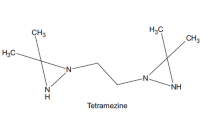Summary
The binding of 5 drugs to plasma proteins from patients with alcoholic liver disease has been studied by in vitro techniques and compared to that from normal subjects. The binding of quinidine is decreased in such patients. For this reason, if in patients with alcoholic liver disease treated for coincidental arrhythmias with quinidine, plasma quinidine concentrations are measured, allowance for the decreased binding must be made in interpreting the concentration measurements. Diphenylhydantoin binding was normal or near normal in most of the patients' plasma samples. The other drugs tested, fluorescein, dapsone, and triamterene, had decreased binding in the patients' plasma samples.
Similar content being viewed by others
References
Koch-Weser, J.: Serum drug concentrations as therapeutic guides. New Engl. J. Med.287 227–231 (1972)
Reidenberg, M.M., Affrime, M.: Influence of disease on binding of drugs to plasma proteins. Ann. N.Y. Acad. Sci.226 115–126 (1973)
Solow, E.B., Green, J.B.: The simultaneous determination of multiple anticonvulsant drug levels by gas-liquid chromatography. Neurology22 540–550 (1972)
Borondy, P., Dill, W.A., Chang, T., Buchanan, R.A., Glazko, A.J.: Effect of protein binding on the distribution of 5,5-diphenylhydantoin between plasma and red cells. Ann. N.Y. Acad. Sci.226 82–87 (1973)
Lunde, P.K.M., Rane, A., Yaffe, S.J., Lund, L., Sjöqvist, F.: Plasma protein binding of diphenylhydantoin in man. Clin. Pharmacol. Ther.11 846–855 (1970)
Wilkinson, G.R., Kurata, D.: The uptake of diphenylhydantoin by the human erythrocyte and its application to the estimation of plasma binding. In: Drug interaction, pp. 289–297. (Morselli, P.L., Garattini, S., Cohen, S.N., Eds.). New York: Raven Press 1974
Galvão-Teles, A., Burke, C.W., Anderson, D.C., Marshall, J.C., Corker, C.S., Brown, R.L., Clark, M.L.: Biologically active androgens and oestradiol in men with chronic liver disease. Lancet 1973I 173–177
Breuer, V.J., Schneider, H.T., Breuer, H.: Untersuchungen über die Bindung von Testosteron und Östradiol-17β durch Serumproteine bei Normalpersonen und bei Patienten mit Lebercirrhose. Z. klin. Chem.8 626–631 (1970)
Powell, L.W., Axelson, E.: Corticosteroids in liver disease: studies on the biological conversion of prednisone to prednisolone and plasma protein binding. Gut13 690–696 (1972)
Hooper, W.D., Bochner, F., Eadie, M.J., Tyrer, J.H.: Plasma protein binding of diphenylhydantoin. Clin. Pharmacol. Ther.15 276–282 (1974)
Author information
Authors and Affiliations
Additional information
Supported by grants (GM 18279 and RR349) from the U.S. Public Health Service and a grant from the Smith, Kline, and French Foundation.
Rights and permissions
About this article
Cite this article
Affrime, M., Reidenberg, M.M. The protein binding of some drugs in plasma from patients with alcoholic liver disease. Eur J Clin Pharmacol 8, 267–269 (1975). https://doi.org/10.1007/BF00567126
Received:
Accepted:
Issue Date:
DOI: https://doi.org/10.1007/BF00567126



